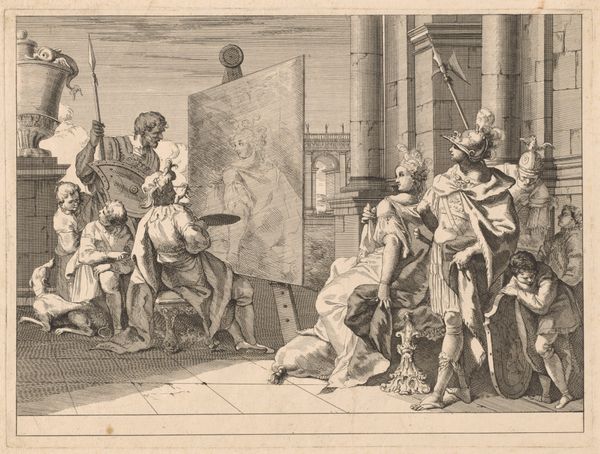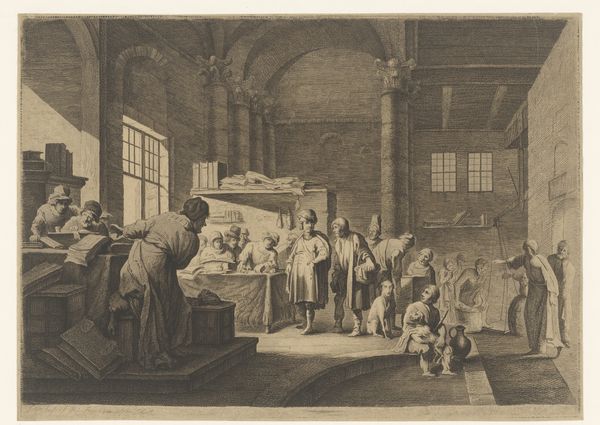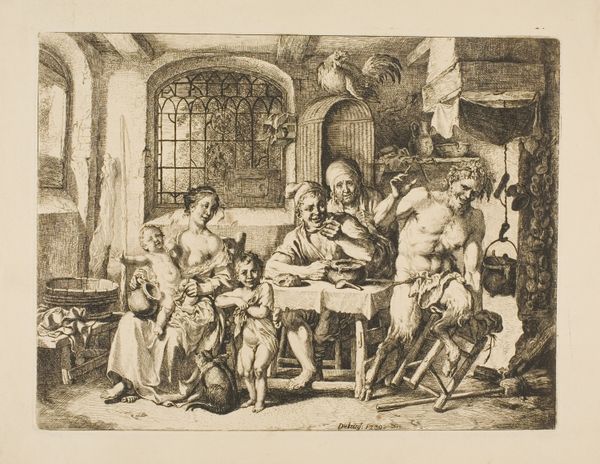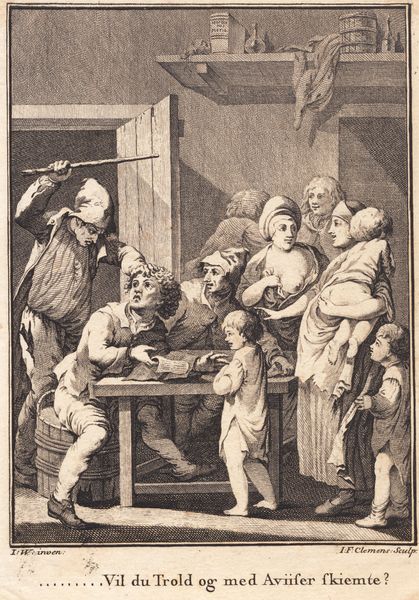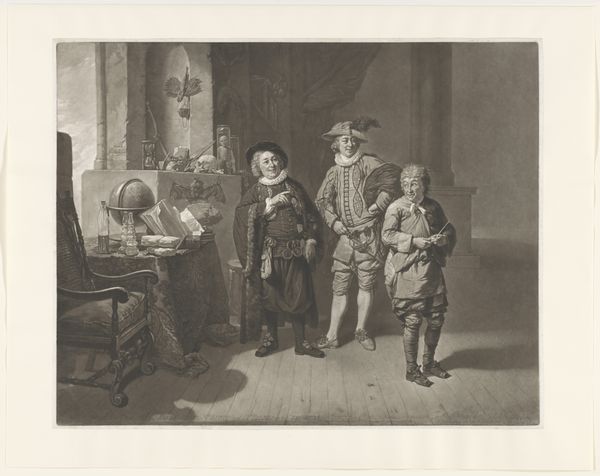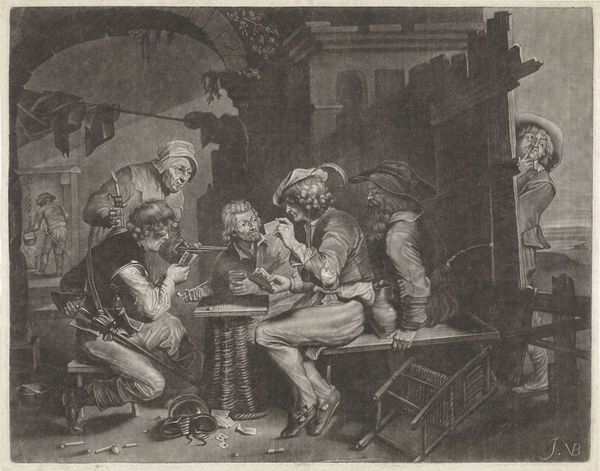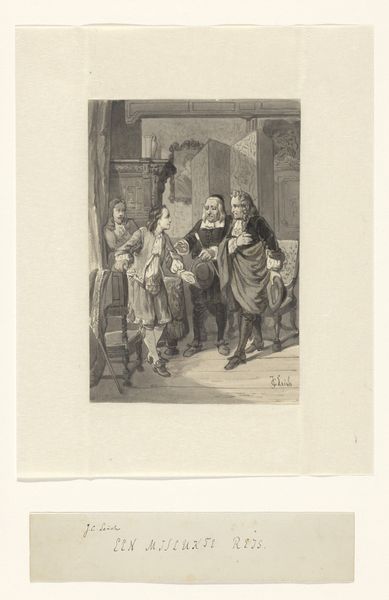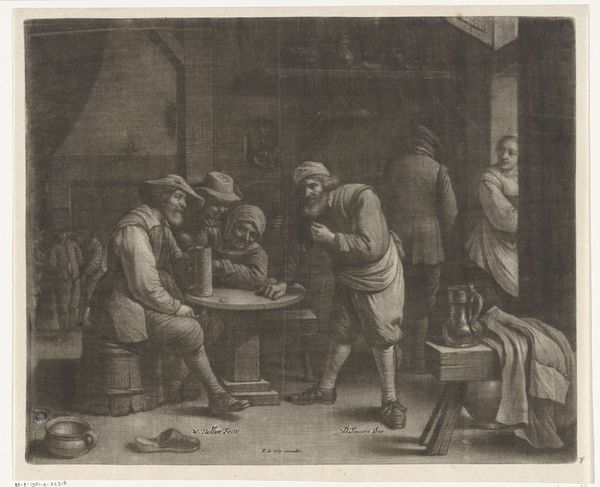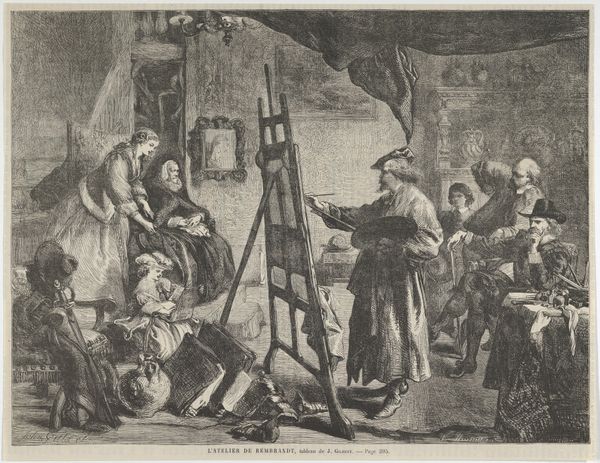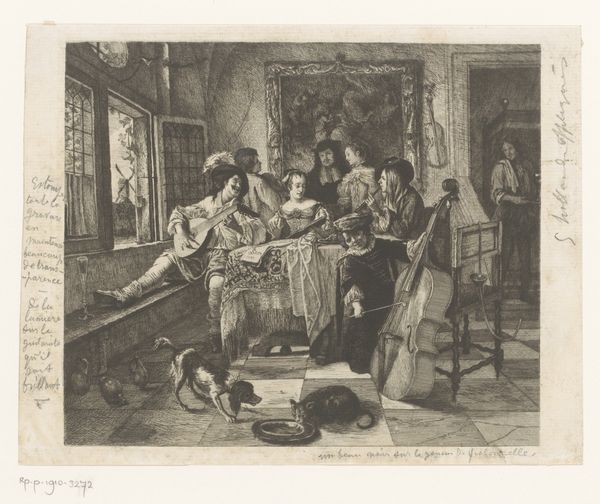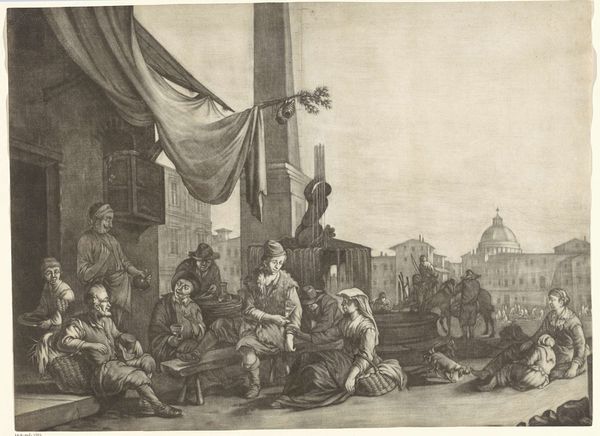
painting, oil-paint
#
portrait
#
narrative-art
#
baroque
#
painting
#
oil-paint
#
costume
#
genre-painting
Dimensions: support height 44.7 cm, support width 72.2 cm, outer size depth 7.5 cm
Copyright: Rijks Museum: Open Domain
Curator: Welcome. Before us hangs Jacob Duck’s painting, "The Wine Connoisseurs," dating from around 1640 to 1642. The work employs oil paint. Editor: Oh, it has a decidedly convivial atmosphere, wouldn’t you say? The dim lighting seems almost… expectant. There's a sense of merriment brewing. Curator: Notice how the artist has structured the composition. A vertical division is established with the prominent figure in the left foreground balancing the receding orthogonal of barrels on the right. Duck contrasts near with far through subtle tonal shifts. Editor: The figure raising his glass... is he a Bacchus figure? Wine, historically, isn’t merely a beverage but a potent symbol of revelry, fertility, and even transcendence in some cultural contexts. Is he proposing a toast? Or merely flaunting a prize? Curator: Precisely. Consider also how the clothing articulates status differences. Observe the cut, the embellishments, and the implicit value within these meticulously rendered fabrics. This provides us access to an important interplay between commerce, social class, and visual representation. Editor: These are gentlemen of leisure, surely. Wine, at this period, signifies not just pleasure, but social standing. Note the theatrical element—they appear like actors on a stage. And the lute case to the left—hinting at music and perhaps a romantic element at play here as well. Curator: And the shadows? They’re more than mere lack of light. Duck utilizes value contrasts—gradations—to articulate a three-dimensional pictorial space through strictly formal relations. Editor: I'd argue that these shadows invite speculation, and imbue the scene with an air of ambiguity. A semiotic game of light and darkness. I would ask – is something darker transpiring amidst this jovial scene? Curator: Possibly, yes. Formally, the artist teases an ambivalence by manipulating visual elements in precise calculated manners. Editor: In essence, Duck invites us to question beyond surface impressions to interpret hidden cultural layers embedded in familiar motifs. Curator: A meticulous balance between compositional form and pictorial narrative – ultimately an interplay within structured optical data. Editor: A symbolic narrative, skillfully encoded in everyday visual experiences, for viewers in that period and, intriguing perhaps for us now to decode.
Comments
No comments
Be the first to comment and join the conversation on the ultimate creative platform.

